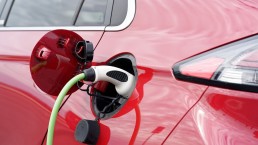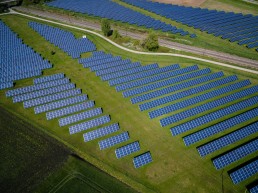CIPS Awards Winners
Last night at the CIPS Excellence in Procurement Awards, we won “Best Procurement Consultancy Project of the Year” for our collaboration with Ramsay Health Care UK.
Congratulations to both teams!
Procurement Transformation Programme with Ramsay Health Care UK
As a pandemic response, Ramsay UK embarked on an ambitious growth & efficiency programme. Curzon designed and delivered a substantial cost reduction and Procurement Transformation programme.
Over 9 months, we defined a pragmatic and agile approach to implementing a best-in-class procurement organisation with an increased mandate, able to accelerate benefit delivery, and manage high spend / high complex clinical spend categories.
We helped Ramsay UK to deliver £multi-millions in incremental annualised savings. In addition, the savings have translated into several £100 million worth of shareholder value.
View the full case here – https://www.curzonconsulting.com/procurement-consultancy-project-of-the-year-ramsay-healthcare/

CONTACT US TO FIND OUT HOW WE CAN HELP
Sustainable Construction Innovation, Does it matter?
The transport construction industry has significant opportunities to reduce carbon by developing materials with lower embedded carbon. Producing cement uses a great deal of energy, so finding a waste product that can substitute for cement makes good environmental sense, while concrete is always at the top of construction sites carbon emissions. Pulverised Fuel Ash, PFA, is a by-product of coal-burning power stations. The ‘ash’ is recovered from the gases and used, amongst other functions, as a cement substitute. This will reduce CO2 by reducing cement through the increased use of cement replacement and increased use of recycled aggregate.
This positive change is one of the most common ways that businesses innovate, and one used to innovate frequently. Cement product innovations play a significant role in the transition towards carbon net-zero emissions across construction industries.
The network of universities, cCatapults, and grant funding allows businesses to embrace innovation and provide more high-value services that change the industry’s innovation capability. There is unprecedented investment and attention by Government, customers and business to advance innovation capability to deliver new business outcomes that will redefine collaborative relationships across the supply chain, increase repeat business with customers and demonstrate that the industry is not a commodity and cannot be procured solely on price. What is delivered is complex and requires highly skilled people to look at delivering the best solution.
Please contact andrew.wilson@curzonconsulting.com or take a look at Curzon Consulting’s sustainability website
References:
GreenSpec. Building Design.

About the author

Andrew Wilson
Andrew is a seasoned strategy and transformation consultant with experience across Africa and the UK.
His background is in capital projects, energy, mining and sustainability. He has a passion for the crossover between productivity, growth and sustainability, complemented by his qualification from Cambridge University in Business and Climate Change: Towards Net Zero Emissions.
Andrew has built mines, towns, roads and power plants, and he aims to keep building using a sustainability lens.
Which risks are the most challenging to carbon net-zero in Africa?
There is a ‘ ticking timebomb’ in third-world countries where there is heavy reliance on fossil fuels (coal burning) for electricity and is responsible for between thirty to/forty per cent of employment. In the particular case of Africa, tThe continent is embarking on a massive expansion of fossil fuel electricity. More than 200 new power stations are planned, the majority of which will burn coal (Pollutionwatch, The Guardian). However, Africa is uniquely positioned to leapfrog dependence on fossil fuels and utilise abundant renewable resources such as solar and wind. Government legislation to reduce this dependency would see joblessness leading to hunger, civil unrest and a potential change of government at the ballot box. Trade Unions are very strong in these sectors due to human rights abuses for tens of years. For change to happen, there is a tricky hierarchy of political players to be satisfied and included before any legislation would be agreed and implemented.
What business opportunities could be related to the African net-zero transition?
Many of the countries mentioned above have very high temperatures, which provide strong sunlight. This raises solar panel opportunities. The countries are also vast and tempting medium-term investment options for wind turbines as their manufacturing costs drop and returns increase as populations grow and require electrification. Fossil fuel companies need to start investing in renewable energies to continue making positive revenue margins and balancing their emissions to carbon net-zero.
Social or economic network effects?
There are extreme views against fossil fuel companies, often with headquarters in European countries. Social media highlights these emission concerns and provides a platform to disseminate important emission information and gather people to attend anti-emissions rallies.
Contact me at www.curzonconsulting.com to discuss further.
About the author

Andrew Wilson
Andrew is a seasoned strategy and transformation consultant with experience across Africa and the UK.
His background is in capital projects, energy, mining and sustainability. He has a passion for the crossover between productivity, growth and sustainability, complemented by his qualification from Cambridge University in Business and Climate Change: Towards Net Zero Emissions.
Andrew has built mines, towns, roads and power plants, and he aims to keep building using a sustainability lens.
Why renewable energy is fuelling investor interest?
Renewables will represent 80% of the total share of investments in power generating capacity from today to 2050. Global energy needs are expected to grow by 30% between today and 2040.
As an asset class, renewable energy has matured dramatically over the past two decades. It has gone from being seen as an alternative culture to having huge investment potential. At the same time, traditional investment norms are changing and not just because of the evolving sustainability mega-trend. In recent years, investment managers have increased their allocations to the broader real assets sector with growing numbers classifying infrastructure and real estate as “real assets”.
Solar power does not pollute the air with greenhouse gases and is noise-free to be used for residential purposes. Solar opportunities are available at various scales, i.e. for households and large business ventures providing power to the grid. Solar panels are the fastest-growing renewable energy option, thanks to falling costs and increasing investment. Their easy installation and “low emissions” are environmentally friendly.
Wind turbine power will be an increasingly compelling longer-term investment due to increasing urbanisation and population growth, leading to higher electricity demand. Technological progress with relative cost advantages for renewable energies and an improved regulatory environment (social and political support) motivates businesses to manufacture wind turbines.

About the author

Andrew Wilson
Andrew is a seasoned strategy and transformation consultant with experience across Africa and the UK.
His background is in capital projects, energy, mining and sustainability. He has a passion for the crossover between productivity, growth and sustainability, complemented by his qualification from Cambridge University in Business and Climate Change: Towards Net Zero Emissions.
Andrew has built mines, towns, roads and power plants, and he aims to keep building using a sustainability lens.
Why Coupling your Business Plan With Your Decarbonisation Plan is More Effective Than Drafting Them Separately?
There are incredible synergies with aligning purpose and ambition in the decarbonisation sense to the Mission, Vision and Values of the business. Thinking of them in unison will intertwine the business plan (revenue generation) with the decarbonisation plan and allow the business to set short and long-term business goals and decarbonisation metrics. As with most strategy plans, the goals/metrics should be reviewed bi-annually to correct any deviations from the plan.
In the government highway infrastructure sector, the business is aligned to decarbonisation 2050 as legislated by the Paris Agreement 2015 with 2030, 2040 and 2050 time horizons to achieve scientifically based metrics. Collaboration with delivery partners is crucial in reaching these targets. Targets for the delivery partners are aligned to ensuring achieving the business’s Scope 1,2 and 3 targets.
Innovation and collaboration are driving decarbonised materials, electric fleets and whole life design thinking. In other words, it directs a circular economy. Proven technologies and close ties to the government encourage policymakers to be bolder with the legislation they advise politicians to implement. With proven technologies being implemented, financiers are more willing to provide financing.
These innovations provide people who live around major highways with cleaner air and reduced pollution. Less pollution means fewer lung inflictions which ultimately means a healthier society and reduced pressure on the NHS.

About the author

Andrew Wilson
Andrew is a seasoned strategy and transformation consultant with experience across Africa and the UK.
His background is in capital projects, energy, mining and sustainability. He has a passion for the crossover between productivity, growth and sustainability, complemented by his qualification from Cambridge University in Business and Climate Change: Towards Net Zero Emissions.
Andrew has built mines, towns, roads and power plants, and he aims to keep building using a sustainability lens.
Is Degrowth and Decoupling The Answer to Sustainability?
There is little evidence that greenhouse gas emissions can be decoupled from economic growth in absolute terms from an environmental perspective. Since economic growth is one of the main drivers for rising emissions (and increasing depletion of non-renewable resources), it seems evident that a transition to degrowth would make an essential contribution to climate change mitigation, and hence to our moral obligation to preserve future generations’ rights to basic needs fulfilment.
GDP ultimately cannot be decoupled from material and energy use growth. It is, therefore, misleading to develop a growth-oriented policy around the expectation that decoupling is possible. We also note that GDP is increasingly seen as a poor substitution for societal wellbeing. GDP growth is, therefore, a questionable societal goal. Society can sustainably improve wellbeing, including the wellbeing of its natural assets, but only by discarding GDP growth as the goal favouring more comprehensive measures of societal wellbeing.
While relative decoupling has been observed in multiple countries, absolute decoupling remains elusive. Studies observe that no country has achieved absolute decoupling during the past 50 years. Another study reports that population growth and increases in affluence are overwhelming efficiency improvements at the global scale. There is no evidence for absolute reductions in environmental impacts and little evidence to date, even for significant relative decoupling.
Technological advances can lead to absolute decoupling for specific types of impact. For example, it is possible to envisage a scenario in which GDP growth is decoupled from using fossil fuels and related CO2 emissions by switching to 100% renewable energy.
References:
Plos one. Is Decoupling GDP Growth from Environmental Impact Possible?

About the author

Andrew Wilson
Andrew is a seasoned strategy and transformation consultant with experience across Africa and the UK.
His background is in capital projects, energy, mining and sustainability. He has a passion for the crossover between productivity, growth and sustainability, complemented by his qualification from Cambridge University in Business and Climate Change: Towards Net Zero Emissions.
Andrew has built mines, towns, roads and power plants, and he aims to keep building using a sustainability lens.














